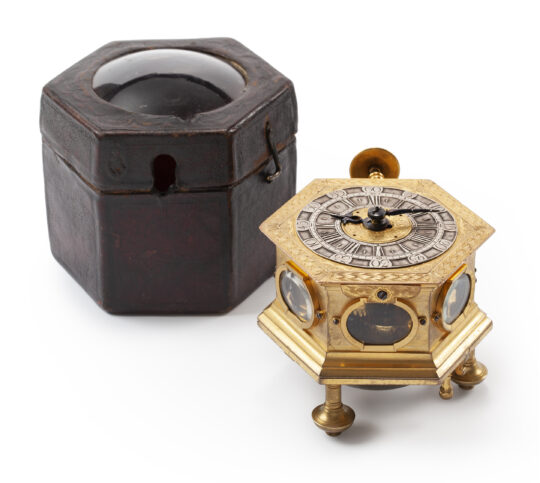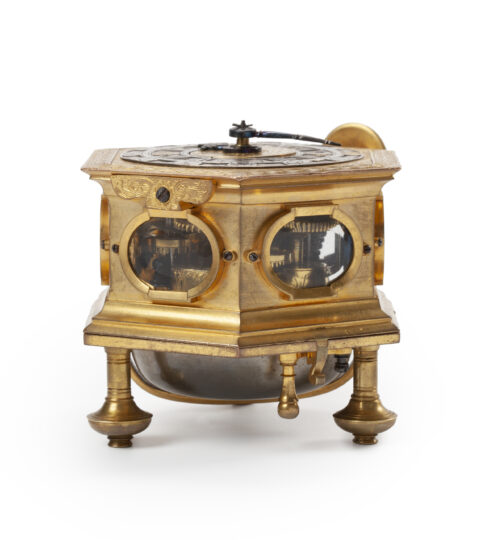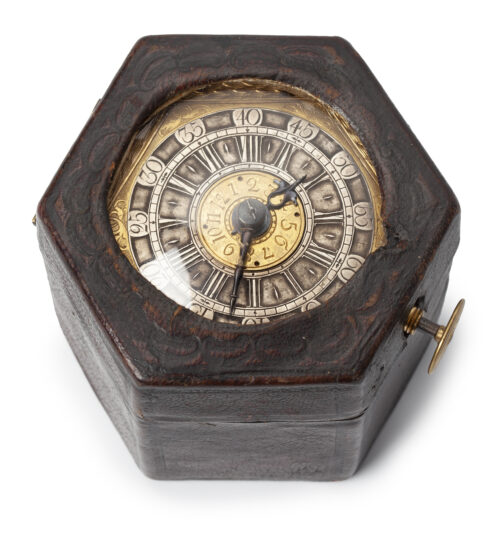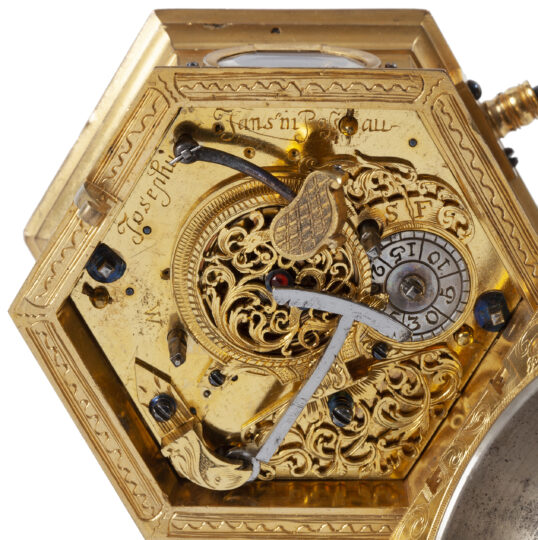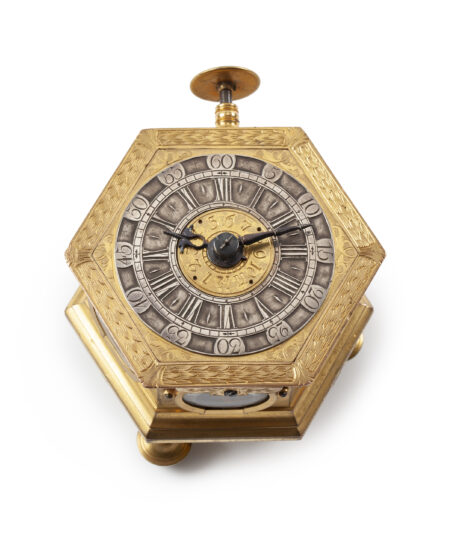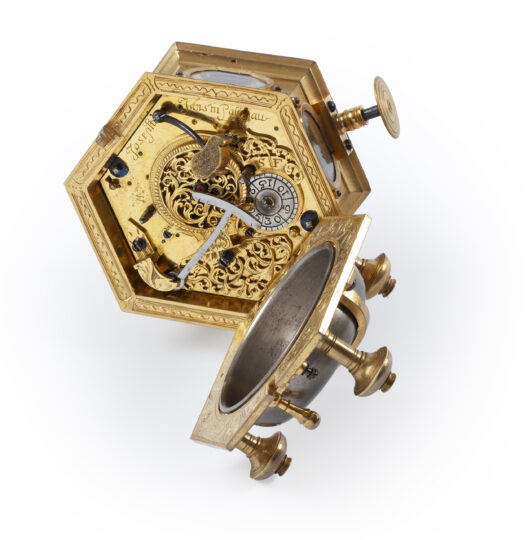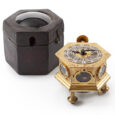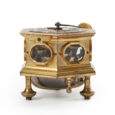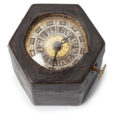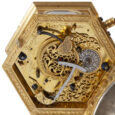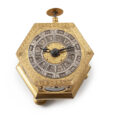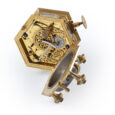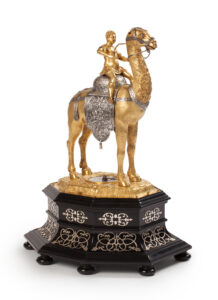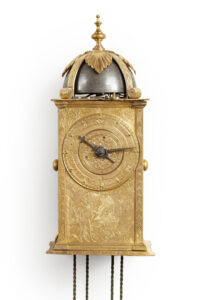HEXAGONAL ‘TISCHUHR’ Joseph Jans in Passau Circa 1720 Germany
M&R207
HEXAGONAL ‘TISCHUHR’ WITH TRAVEL CASE
Signed: Joseph Jans in Passau
Circa 1720
Germany
Movement
The spring-driven, day-going movement of this exceptionally beautiful hexagonal clock is constructed between gilt-brass plates. It consists of a going train, as well as alarm. The going train has a spring barrel, chain fusee and verge escapement with hairspring balance under a fine pierced and engraved balance cock. It can be adjusted by a brass regulator disc, which can be seen upon opening the bottom lid. The repeat striking indicates the hours fully and the quarter and half quarter hours with the appropriate number of strokes on a bell, mounted in the lid. It is activated by a push button on the side. The clock also has alarm and is wound from the back. The maker has signed the clock on the backplate: Joseph Jans in Passau.
Dial
The engraved gilt-brass dial has a Roman silver champlevé chapter ring with half-hour, quarter-hour, Arabic five-minute and minute divisions. The time is indicated by a pair of blued-steel hands. In the middle is a gilt-brass Arabic alarm disc. The dial border is engraved depicting a wheatear motif.
Case
The gilt-brass case of this magnificent clock has oval silver-framed facetted glass windows on all sides so that the movement is almost entirely visible. The movement can be accessed by opening the hexagonal lid with a catch. The clock rests on three turned gilt-brass feet.
Travelling case
To transport the clock it can be placed in its original leather-covered wooden travelling case with glazed top.
Duration: 1 day
Height 6 cm
Width 7 cm.
Literature
J. Abeler, Meister der Uhrmacherkunst, Wuppertal, 2010, p. 271.
An identic clock in, DIE UHR zeitmesser und schmuck in fünf jahrhunderten, p.173.
The maker
Josephus Jans was born in 1680. He was active as a clockmaker in Passau, where he
got married in 1708 and died in 1760. Several of his clocks have survived.

